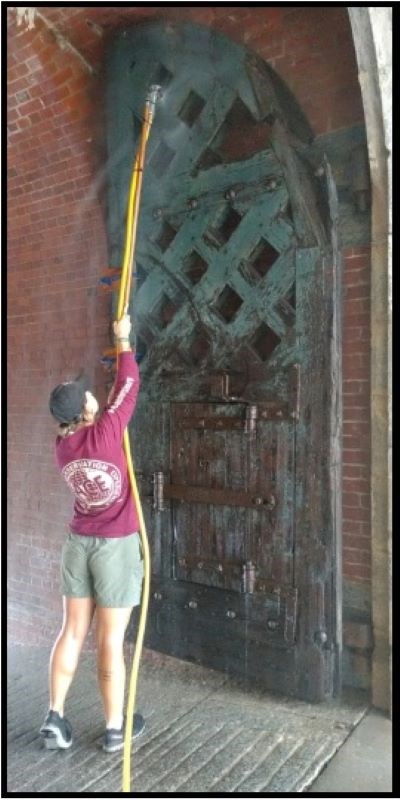Last updated: July 2, 2024
Article
Knocking on the Door of Preservation

NPS Photo
Preservation of Sally Port Doors
The original sally port doors have provided the only entrance and exit to the fort, a duty they have performed for over 170 years. Every visitor to the fort is treated to this intimate glimpse of history as they enter into the fort. For the most part, the doors are in relatively good condition, which can be attributed to the high quality of materials and the fabrication techniques used. The wood is composed of longleaf pine, a now-endangered tree long revered for its strength and shock resistance, and is studded with iron rivets that hold the two layers of 2 inch planks together. Each is hung on two large ferrous straps that extend the full width of the door. The hinges are affixed with bolts that appear to have been made by hand. However, wood and iron artifacts can only last so long against the steady onslaught of sun, rain, and the harsh conditions faced on a coastal island.
NPS Photo
Emergency Conservation
In October of 2016, Fort Pulaski withstood the brutality of a category 2 hurricane as Matthew battered the South Atlantic coast. While the fort itself emerged looking strong and proud, wooden objects, like the flooring and the doors took a more pervasive level of damage, soaking in the salt water of a storm surge that flooded the entire island for days. In September of 2017, the Fort was once again inundated with storm surge as the remnants of Hurricane Irma impacted the park recreating much of the same scenario from the year prior. These storms accelerated the oxidation of many of the iron rivets which, if left untreated, could cause irreparable long-term damage to the doors.
NPS Photo
